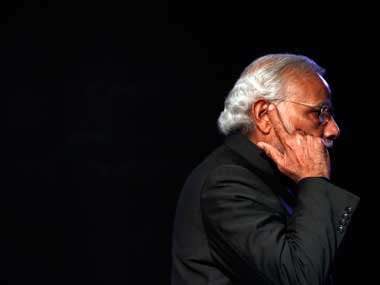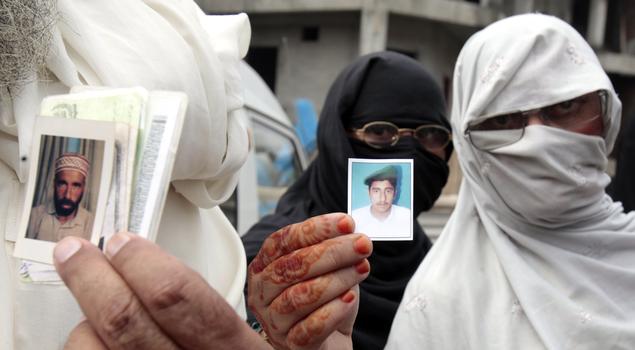June 22, 2015
NEW DELHI – If the Modi government has less than four years of tenure left, it had better start applying the 80:20 rule to decide what it will focus on to deliver maximum impact. Or it can kiss goodbye to re-election in 2019.

June 22, 2015
NEW DELHI – If the Modi government has less than four years of tenure left, it had better start applying the 80:20 rule to decide what it will focus on to deliver maximum impact. Or it can kiss goodbye to re-election in 2019.

The 80:20 rule, also known as the Pareto Principle, says that 20 percent of causes account for 80 percent of results. The reason why the Modi government does not appear to be getting anywhere with its agenda (revival of the economy, corruption, ease of doing business, etc) is because the government's efforts are being spread too thinly over too many initiatives.
It must make choices like, say, dumping the GST bill and focusing instead on the Land Acquisition Bill. It can ease up a bit on labour reforms, and push ahead with other goals that are less daunting. It can avoid privatization, provided it completely streamline public sector performance. But that will take some doing.
Consider the sheer number of policy initiatives (or repackaged UPA schemes) over the last one year: Swachch Bharat, Jan Dhan Yojana, the direct benefits transfer, oil deregulation, Make in India, smart cities, Sagar Mala project, Namami Gange, 24×7 power, goods and services tax, land acquisition bill, railway rejuvenation, housing for all, labour law reform, drive against black money… The list goes on and on.
While there is no need to abandon any good idea, the Modi government has to decide – and now – which four or five initiatives it will focus on and deliver completely during its term. Without that, it won't have a story to tell the electorate.
The simple yardstick to use for deciding priorities must be the following: top priority to that will deliver the biggest bang for the buck in terms of jobs and growth. These must get the biggest and most consistent push. Schemes that can work with executive rule changes must be prioritized over ideas that need legislative changes.
Schemes that are merely nice to have must be handed over to junior ministers and babus to plod along with based on meagre resources, but great operational independence. Schemes that cannot work without states getting into the act must be clearly left to the states to deliver, with the centre playing a supportive role.
This 80:20 prioritization is important because the political timetable is now set, and opposition to Modi, from the Congress, many regional parties and the Aam Aadmi Party, will only increase from now on. This means Modi has to decide which change he will personally invest political capital in, and which ones he will not waste too much time on. If they happen, well and good; if not, he should shrug his shoulders and move on.
The five things that will boost jobs and growth are land and labour reforms, bank recapitalization, accelerated public investment in infrastructure (industrial corridors, roads, railways, rural roads), and defence manufacture and modernization.
Next, radical land and labour policies must focus on BJP-ruled states in the first instance. Currently, six key states – Haryana, Rajasthan, Gujarat, Maharashtra, Madhya Pradesh and Chhattisgarh are directly under BJP control – and logically and politically this is where Modi must choose to implement his reform policies aggressively. Even if he cannot get the land bill through parliament, he can get the states to legislate them and get going. All he has to do is let the state law prevail over the lousy central one legislated by the UPA.
If Modi can get his own party-ruled states to push growth in all the above five areas, the remaining states will fall in line to avoid being left out of the growth race. Everybody should be invited to the party, but policy can be implemented only in states the BJP controls without fuss. So this is where Modi must push hardest. It follows that if Modi wants to get BJP states moving, he has to keep them stable: this suggests that he should allow Vasundhara Raje to stay on and not sacrifice her just in order to seem clean on the Lalit Modi affair. If the state party supports her, Modi should not pressure her to quit.
Given the sharp BJP-Congress polarisation that is likely to happen over the coming months, the last thing Modi needs is his own party falling apart at the state level. The BJP states are the key to his success as PM.If the BJP loses Bihar to the Nitish-Lalu combine later this year, the BJP states will become even more important to his calculations.
Moreover, some reforms and ideas are not worth pushing ahead with at great political cost. The goods and services tax (GST), for example, which the Congress is determined to oppose (for good economic reasons and bad political ones) is not going to bring in great economic or political dividends for at least two or three years even if legislated in the monsoon session. There is more pain than gain in it, since it goes against the long-term trend of increased federal powers. A bad GST is not worth the effort, and a good one can wait for two more years. There are no political benefits to be reaped in 2019 from a bad GST which leaves out most state taxes from its ambit (alcohol, petroleum), and also levies a special 1 percent inter-state tax. The net result will be a high revenue-neutral GST rate of 25-27 percent, which is sure to get a bad name from all stakeholders.
The following is my check-list of must-do, good-to-have, and low-priority goals for the Modi government in its next four years.
Must-do:
- Get land bill passed, and if not possible, get states to pass them and give them priority over central bill.
- Extend direct benefits transfer to kerosene by deregulating prices and offering a fixed central subsidy paid directly into bank accounts.
- Deepen the Jan Dhan Yojana by educating the poor to transact in their accounts by pushing kerosene, fertilizer and other subsidies to cash. Mobile payments must become the preferred mode for unbanked centres, since mobiles have reached where bankers have not. But this requires rural education on the use of mobiles for transacting safely with Jan Dhan accounts. The savings in routing subsidies directly to bank accounts are considerable (14-15 percent in LPG, and could be more in kerosene)), and these will enable Modi to extend benefits without losing fiscal control.
- Get the roads and railways ministries to spend aggressively this year and the next, by innovative financing schemes that won't bust the fisc.
- Recapitalise nationalised banks aggressively – say, Rs 30,000-40,000 crore – and give banks managerial autonomy.
- Use defence manufacturing as a spearhead for Make in India projects.
- Ease of doing business must be a consistent effort all through the next four years; it might even be worth having a separate minister tracking this on a daily basis, both at centre and states. Niti Aayog could be the nodal point for tracking ease of business issues.
Good-to-have:
GST is good to have only if the states agree to make the overall tax low (18 percent or less), and not if they want to keep the most important taxes out).
Labour reforms are good to have, but not at the cost of social rupture. Best to let states legislate labour reforms. Centre should focus on land reforms.
Swachch Bharat should be made part of corporate social responsibility spends. Instead of asking companies to spend on whatever they like, they should all be asked to focus on toilets and cleanliness so that Swachch Bharat and Namami Gange are visibly seen to work in four years.
Black money and corruption should be eliminated by systemic changes (transparency, fewer intrusive inspections), not draconian laws that frighten businessmen into flee India. The government should offer an amnesty scheme for black money, and sweeten this politically by saying 20 percent of the penalties so imposed on amnesty seekers will be given to the poor – and paid into Jan Dhan accounts. The rest of the chasing should be left to the Supreme Court-appointed SIT.
Fertilizer prices must be deregulated in stages. Subsidies should be paid into farmers' accounts, and not to fertilizer producers.
The Food Security Act must be refocused on the 30-40 percent who are really poor, and not 65 percent of the population.
Housing-for-all will work only if land reforms happen. The interest subvention scheme is good enough, but it will work only if states make cheao land available for millions of the urban poor, and small land-owners are willing to sell their land parcels in rural areas.
2015 is the time for Modi to choose the themes that will play positively in 2019. He can't be all things to all people, nor can he deliver as much as he has promised. He has to recalibrate his deliverables.
Above all, he has to get the BJP states to perform.
Courtesy: Firstpost












































































































